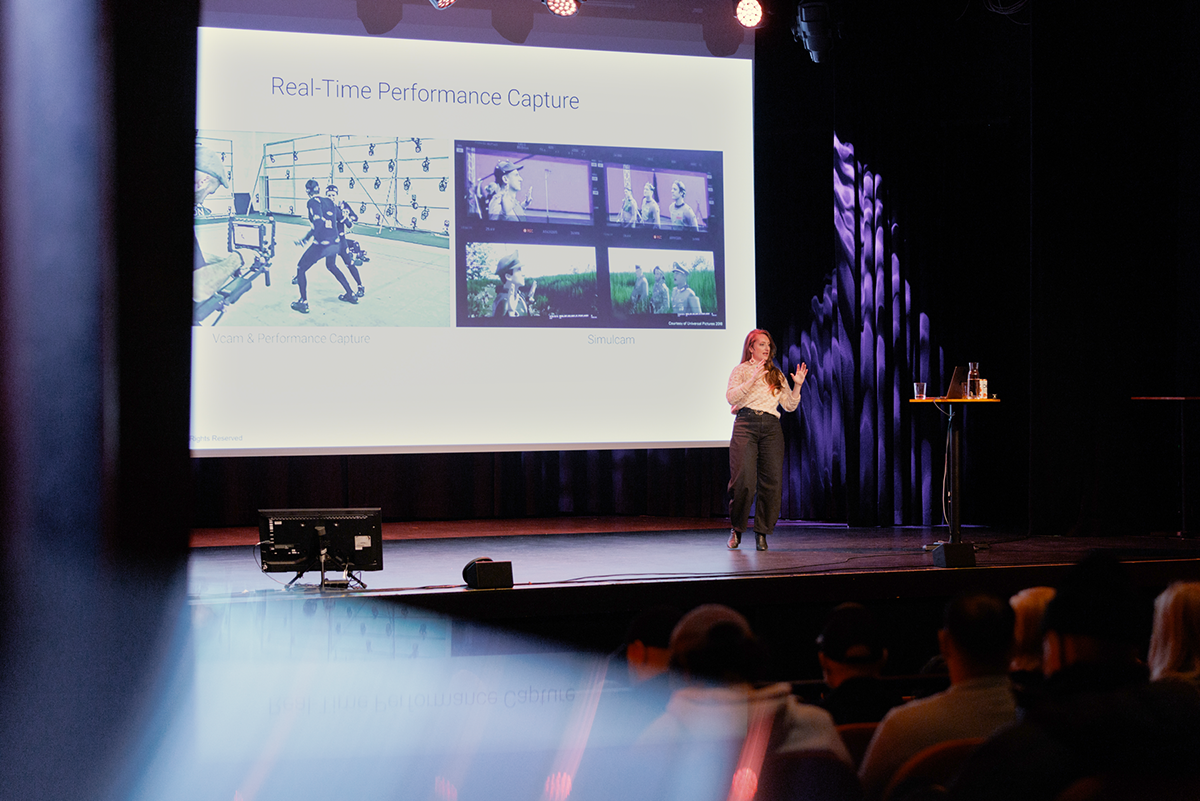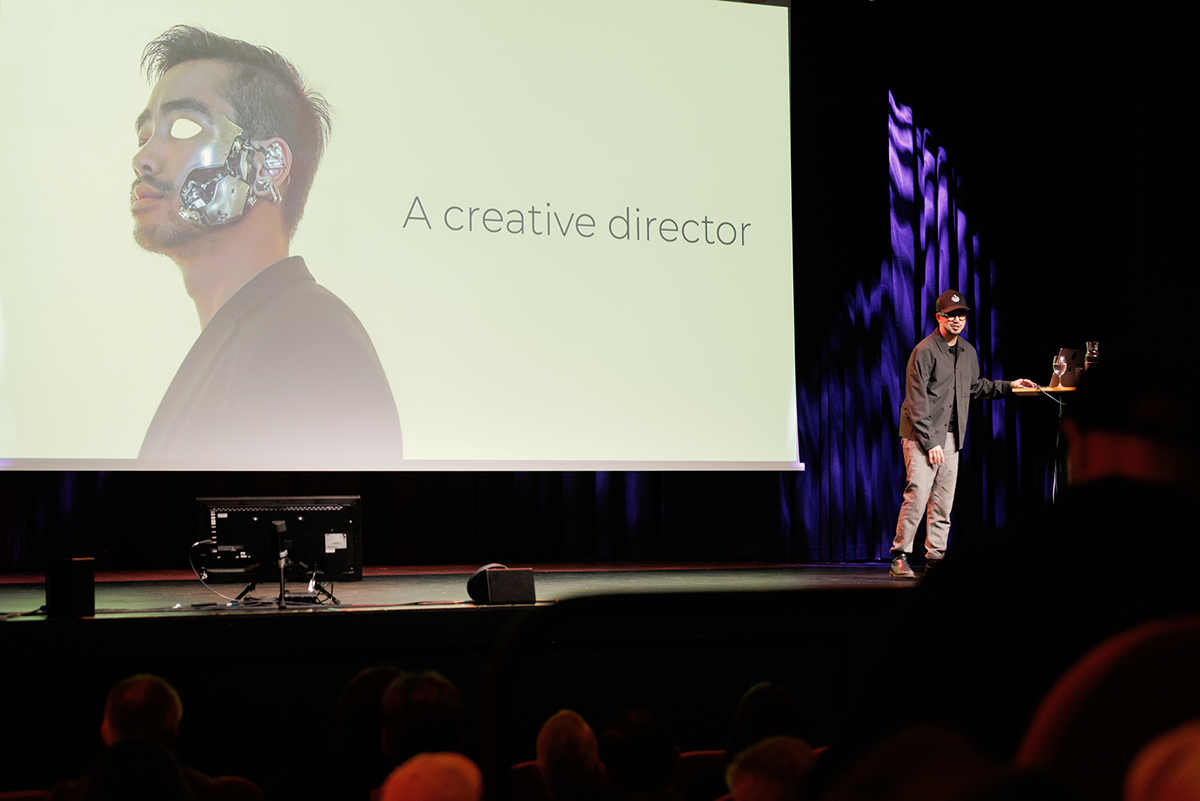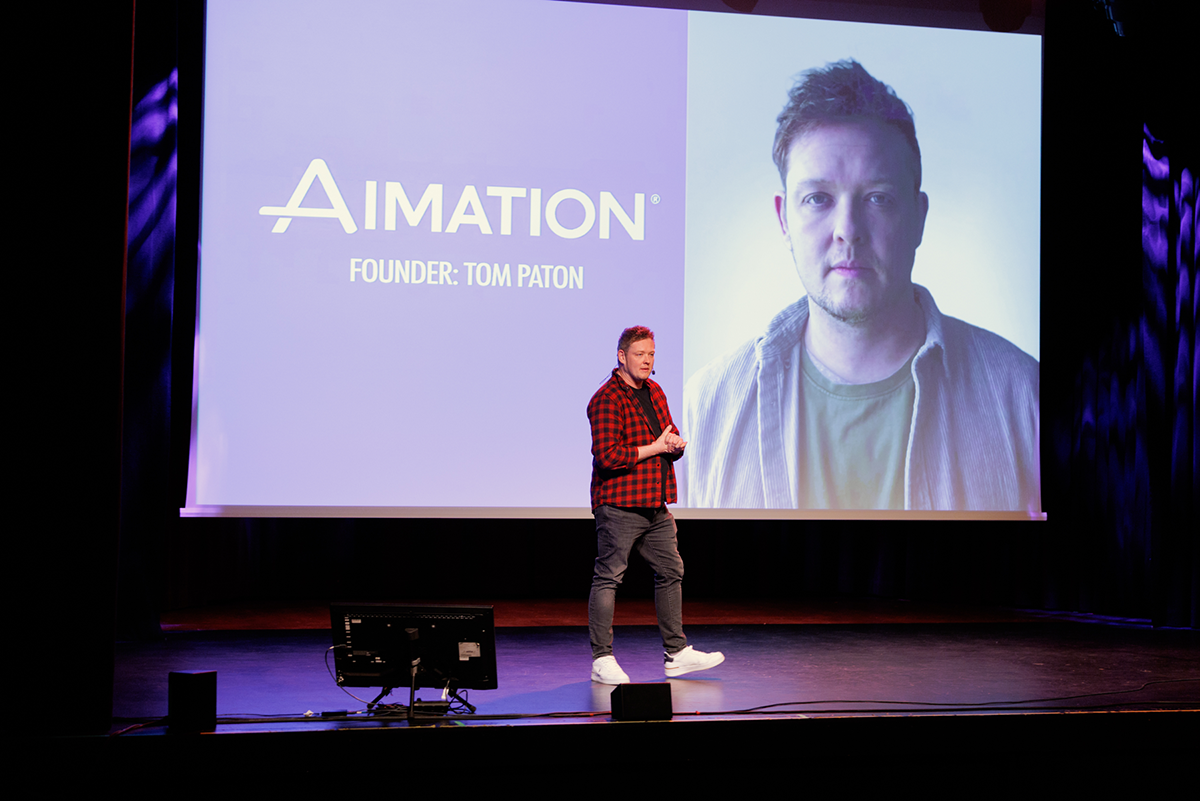STOCKHOLM AI FILM CONFERENCE 2025
HAPPENINGText: Victor Moreno
Another important note at the conference was AI tools for cinematographers. AI is transforming cinematography with accessible tools for professionals. Move.ai has created iPhone apps that simplify performance capture, while Runway has released enhanced camera tools that give cinematographers more control over AI-generated videos. “As a cinematographer who feels limited by text prompts in AI platforms, it’s nice to have more control,” says Kathryn Brillhart. During her presentation, she explored how to enhance storytelling without replacing artistry, a core value she has at her work. “This is a great time to influence these companies. If you’re a specialist in entertainment, sending feedback to these companies is important because they need a variety of voices.”

Kathryn Brillhart, Virtual Production Supervisor & Director of Photography
Brillhart uses AI in both independent and studio work, though carefully managing licensing in professional settings. She also highlights Robert Zemeckis’ film “HERE” where AI has helped with quick fixes: “Visual effects supervisors could select an area that needed tweaking or upscale a piece on the fly.” Kathryn encourages a “nervous excitement” rather than fear when approaching AI: “Even if you’re afraid, just walk forward and learn about it. Don’t let your fear freeze you. Be able to say, ‘I’m fearful of this, but that means I’m excited to learn about it.'”

Edmond Yang, Awarded short film creator
Edmond Yang is an award-winning short film creator who together with his team made in just 48 hours One Last Wish for the Cinema Synthetica Norway 2024 challenge. “We walked into the studio on Friday with no prior script knowledge and were randomly assigned teams,” Yang recalls. The dialogue-only script meant they had to build the entire world from scratch. Opting for a stop-motion aesthetic with doll-like figures in a dystopian setting, they worked 17 hours on Saturday and 11 on Sunday to complete the film. The project’s success opened global opportunities for Yang, with work spanning Turkey, Azerbaijan, China, and the U.S., including plans for a full-length AI-generated feature. As AI filmmaking evolves, he notes growing investor expectations: “You need higher delivery and control.” Looking ahead, he predicts real-time video generation, faster models, and more responsive tools, possibly within months.

Tom Paton, Tech Founder of AiMation & AI Filmmaking Pioneer
Another key figure of the event, Tom Paton, who is creating a new business model for AI-generated content with AiMation, a platform about to launch – you can join the waitlist at their site – developing 120 pieces of IP. “By 2026, we’ll be releasing one new episode or film every day,” he projects, targeting what he calls “that forgotten theatrical window” in the AI content ecosystem. Together with his team, they produced Where the Robots Grow, one of the first AI-driven feature films available free online. “I believe artists should tell their stories and push the medium forward, but people also have a right to make a living from this.” Rather than forcing AI into existing frameworks, Paton is building entirely new economic models: “There’s an obsession to cram this technology into existing infrastructure. That doesn’t interest me.” Drawing on his background as a filmmaker, VFX artist, and programmer, he watches for technology convergences that transform industries: “Netflix wasn’t just about streaming. It was a convergence of digital cameras, editing tools, and the 5D Mark II. I’ve always looked for that next convergence allowing economic revolution.” Unlike user-generated platforms, AiMation focuses on curation. He estimates 25-40% of content will come from in-house teams with the rest from commissioned work and licensing. “A giant part of what we’re doing is working with emerging talent to create a new economic model that favors creators,” he emphasizes. “We’re focused on long-form only, series and full-runtime movies.”
As the conference demonstrated, AI isn’t replacing creativity but revolutionizing how creatives work, democratizing high-end production, streamlining workflows, and enabling bold new artistic expressions. Film production is steadily weaving AI throughout the creative process, with perspectives spanning from independent creators embracing rapid iteration to studio professionals navigating complex integration challenges. Limitations that existed just weeks ago have already been overcome. Most profound insight emerged not from any single discipline, but from the rich dialogue between storytellers, philosophers, developers, and policy thinkers. The future of AI in creative industries demands interdisciplinary fluency, a dynamic space where hybrid perspectives converge. 2025 marks a critical turning point where AI will no longer be the guest but an essential collaborator. Sooner than expected, “AI creatives” will simply be known as “creatives” again where the technology has become as fundamental and invisible as the camera itself.
A special thanks to Micke Mikeadelica, Sebastian Kamph, and Billy Boman for their support during the event, and to all the speakers for their time and insights in making this happen.
Victor Moreno is a SHIFT contributor and an AI creative, recognized as part of Runway’s Top 50 Global Network.
Stockholm AI Film Conference 2025
Date: 12th March 2025
Place: Maxim Theater
Address: Karlaplan 4, 114 60 Stockholm
info@sthlmaiconference.com
https://www.sthlmaiconference.com
Text: Victor Moreno
Photos: Elias Ljungberg





